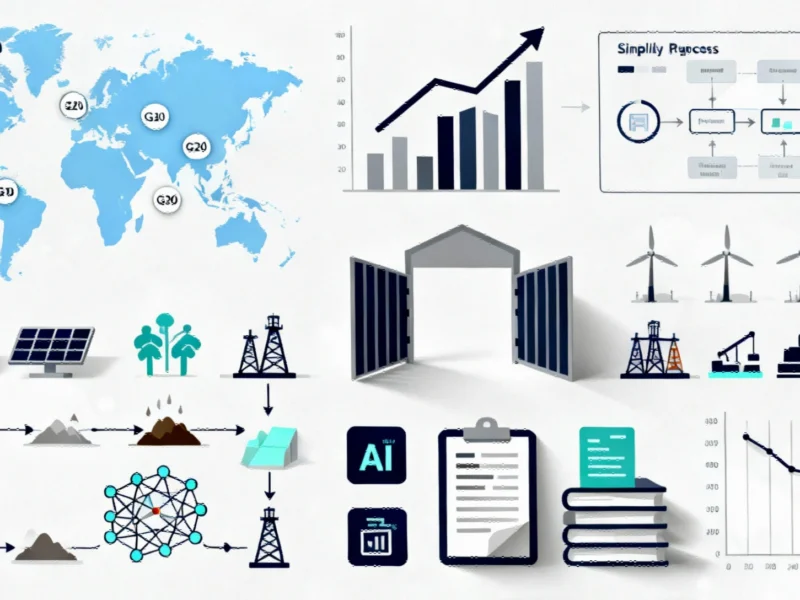The Current Landscape of Women in STEM
While Ada Lovelace’s pioneering work in computing laid the foundation for modern technology, today’s STEM fields still struggle to fully embrace female talent. With women comprising just 28% of the global STEM workforce, industry leaders are calling for more than superficial diversity initiatives—they’re advocating for fundamental systemic changes that create genuine pathways to leadership.
Sarah Law, Senior VP of Business Operations at Veracode, emphasizes that true progress requires more than token representation. “The most impactful thing an organization can do to empower women in STEM is build a system that aligns capability with opportunity,” she notes. This approach reflects broader industry developments where companies are rethinking their talent strategies.
Building Technical Competence in Emerging Fields
As technology evolves, ensuring women develop expertise in cutting-edge fields becomes crucial. Kathrin Kind, Chief Data Scientist and AI Director at Cognizant, highlights the distinction between working in AI versus working with AI. “One is about creating the technology, the other about reimagining every profession with intelligent tools,” she explains. This technical foundation enables women to drive innovation rather than just participate in it.
Divya Gautam, Head of AI at Dexory, makes a similar case for robotics, noting that diversity fuels innovation in emerging sectors. Her perspective aligns with recent technology initiatives that prioritize inclusive growth in specialized fields.
Mentorship and Structural Support Systems
While individual guidance remains valuable, leaders are recognizing that mentorship alone cannot transform an entire industry. Lisa Topliss, Director of Strategy and Operations at Ricoh Europe, advises women to “be bold in your capabilities and seek out mentors who can champion you.” However, she acknowledges this must be supported by organizational commitment to female talent development.
Nikita Miller, CPO at TravelPerk, describes her mentors as a “personal board of directors” who helped navigate professional challenges. This philosophy influenced programs like CodeCamp, which opens doors for new tech talent. These internal efforts complement external market trends where investment in diverse talent is increasingly valued.
Systemic Programs Driving Meaningful Change
Nassima Auvray, Director of Defence and Security at Orange Business, points to structured initiatives like the Women Up program as essential for creating lasting change. “Public commitments like this encourage reflection, challenge stereotypes and help improve retention,” she says. Such programs represent the kind of related innovations in talent management that can transform industries.
Evrim Tekeşin, Regional Director at Dynatrace, emphasizes the importance of authenticity in leadership development. “The next generation of female tech leaders needs to know that you do not have to become someone else to succeed in tech,” she states. This approach requires rethinking traditional leadership models and creating space for diverse styles.
Redefining Leadership and Organizational Culture
Kat Judd, Chief People Officer at Lucid Software, argues that the problem extends beyond simply placing women in senior roles. “When we provide opportunities for women to learn from one another and build confidence in their abilities, we create the foundation for lasting success,” she says. This cultural shift represents a significant departure from traditional STEM leadership models.
Sarah Hoffman, Director of Research AI at AlphaSense, recalls being mistaken for a child during her first internship, highlighting how far the industry has come—and how far it still needs to go. Her experience underscores why industry developments in diversity and inclusion must address both representation and cultural barriers.
The Path Forward: Integrated Solutions
Progress requires combining skill development, mentorship, and structural change. As these leaders demonstrate, no single solution will address the gender gap in STEM. Instead, organizations must implement comprehensive approaches that include early encouragement, visible role models, and workplaces that actively support growth and inclusion.
The transformation extends beyond individual companies to the entire technology ecosystem, including how market trends influence diversity priorities. By building systems that empower women to drive technological innovation, the industry can finally realize Ada Lovelace’s vision of computers changing the world—with women leading that change.
The consensus among these leaders is clear: Meaningful progress requires moving beyond isolated initiatives to create integrated systems where women can authentically lead, innovate, and shape the future of STEM fields.
This article aggregates information from publicly available sources. All trademarks and copyrights belong to their respective owners.



